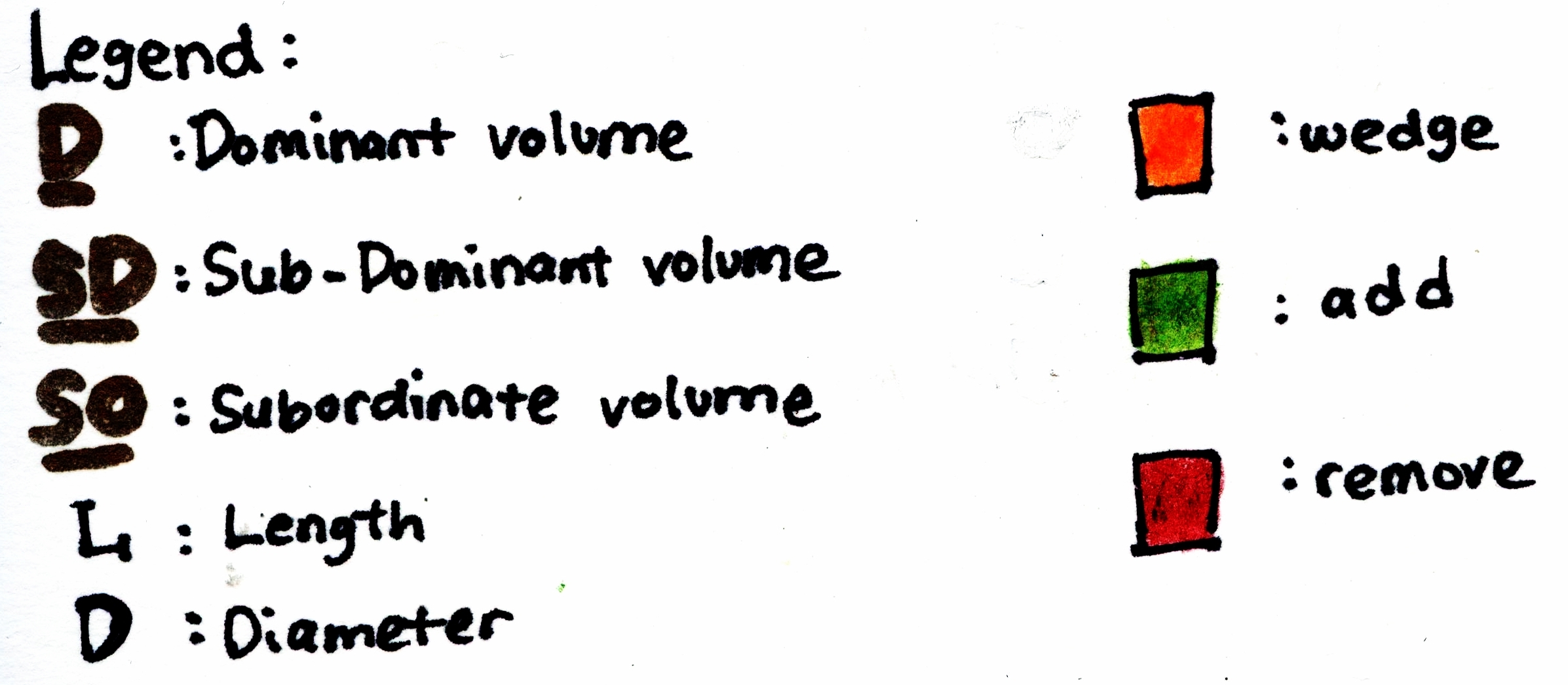Hi! 😀
For our second project in 3D we learning more about dynamic form composition along diagonal axes. In addition to volumes relationship and method to connect them in my project 1 post, we are learning about tension and balance.
The tensions we consider are between the axes of the volumes, between the surfaces of the planes and between the accents of the curves.
And three type of balance in group movements are:
Dependent balance describes a situation in which a group movement of three or four volumes are dependent on one another for balance.
Independent balance refers to the condition in which a line or volume in a static composition is independently balanced in the best position regardless of the physically support by other curves or straight lines.
Precarious balance describes the situation in which for a split second in time, one gets the feeling of balance, as if the very gesture is holding its breath and supporting itself for the moment.
So ya, here is my 3D models and analysis 🙂
MODEL 1: The Tilted Gramophone

Relationship: Cylinder is Dominant (D), cone is Sub-Dominant (SD), sphere is Subordinate (SO)
Method: Wedging between SD and SO
Proportion and Rhythm
Inherent: Sphere has the smallest diameter, around one-third of cone diameter. While the cone has diameter about half (~0.455) of cylinder (disk). So, the cylinder has the longest diameter.
Comparative: Cone is greatest in mass, followed by cylinder then sphere.
Overall: Cone has a precarious balance on cylinder while the sphere is dependent on cone.
Comment: Even though there is relatively high tension at the meeting point between D and SD, I think this model has a really well flow.
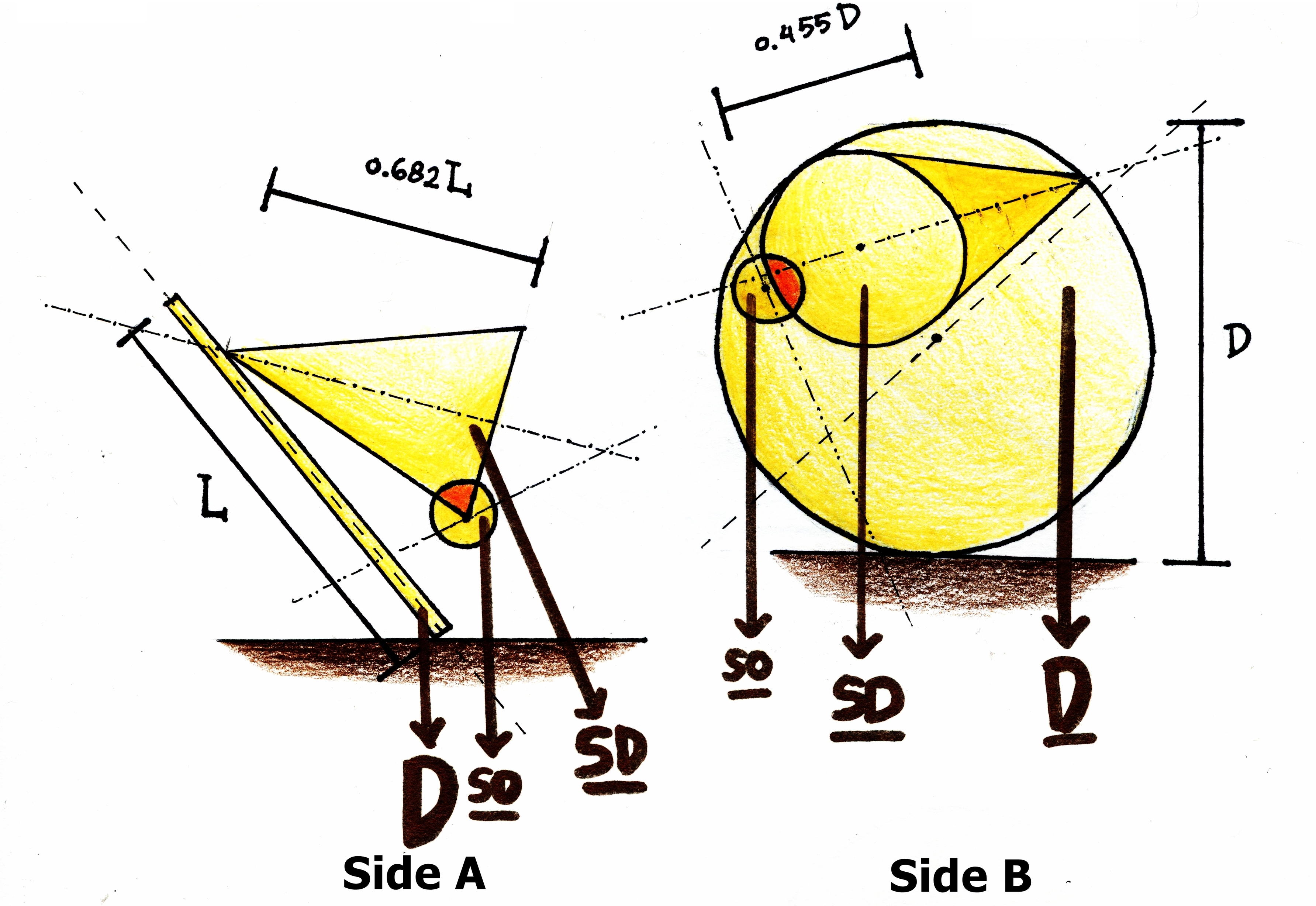
Comment and Improvement:
From side A, at a glance the model seems to have two SDs. The length of D doesn’t seem dominant enough compared to SD due to the larger area of SD.
From side B, the D is obvious but somehow not strong enough, hence will be better if its area is to be increased.
As such, the D need to be more dominant by increasing the diameter of the cylinder by half.
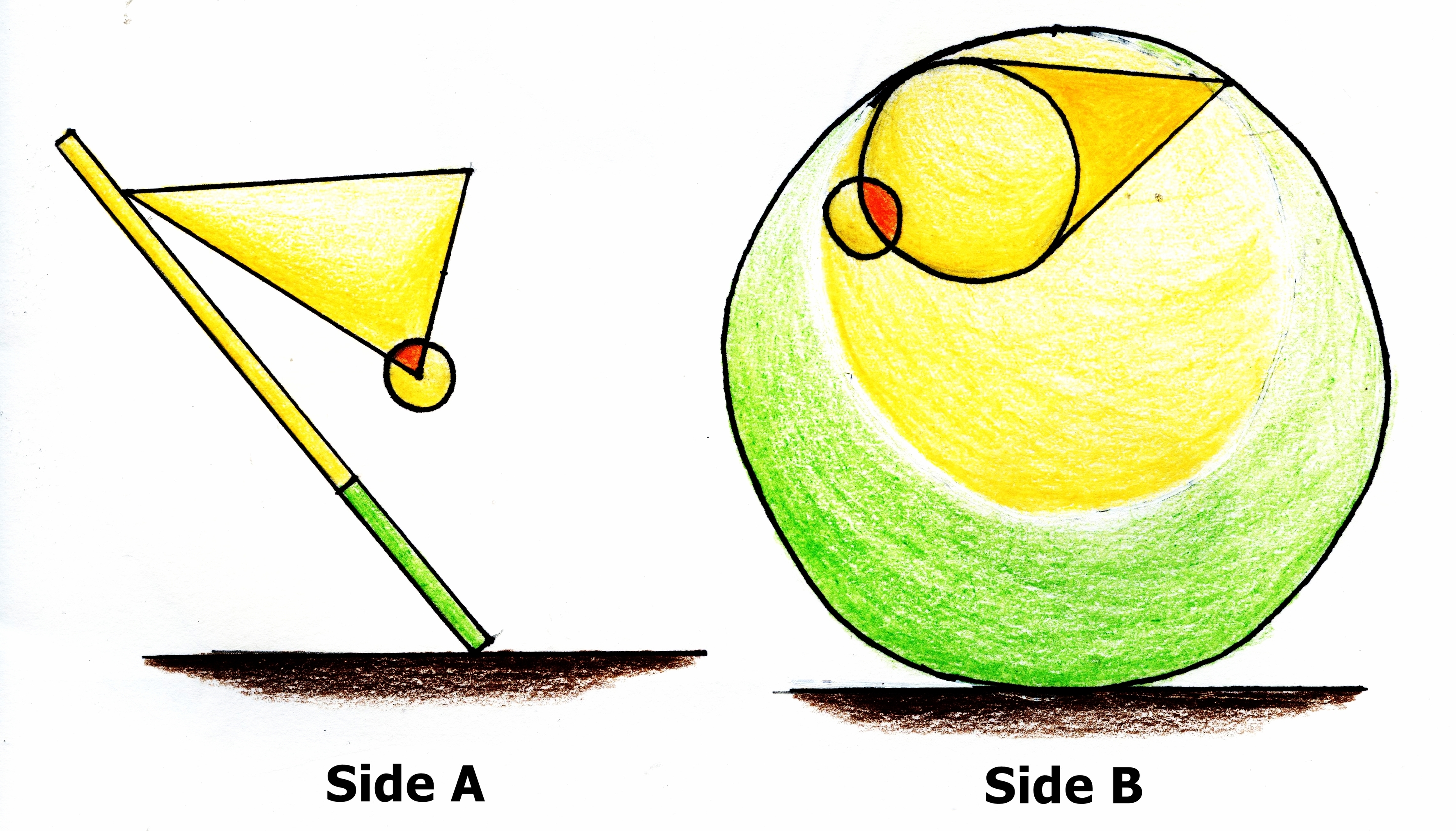
MODEL 2: The Diagonal Vacuum Cleaner
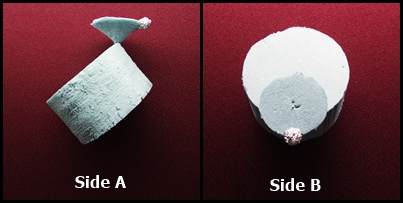
Relationship: Cylinder is Dominant (D), cone is Sub-Dominant (SD), sphere is Subordinate (SO)
Method: Wedging between SD and SO, I decided to not wedge SD to D as I found it interesting that SD can be pivoted and rotate in circular motion.
Proportion and Rhythm
Inherent: Sphere has the smallest diameter, around a quarter of cone diameter. While the cone has diameter about half (~0.574) of cylinder. In term of length, the cone is about one-third (~0.385) of cylinder. So, the cylinder has the longest in both diameter and length.
Comparative: Cylinder is greatest in mass, followed by cone then sphere.
Overall: Cone is dependent on cylinder while the sphere is dependent on cone.
Comment: I just realized that my Model 2 is really similar to Model 1 in term of shape and arrangement. The shape different is the thickness of the cylinder and height of cone, while the main arrangement different is in Model 1 the SD is directed inwards while in Model 2 it is directed outwards.
Even though it’s similar, Model 2 is relatively more balance and has less tension than Model 1. But it doesn’t flow as well as Model 1 due to the bulky D.
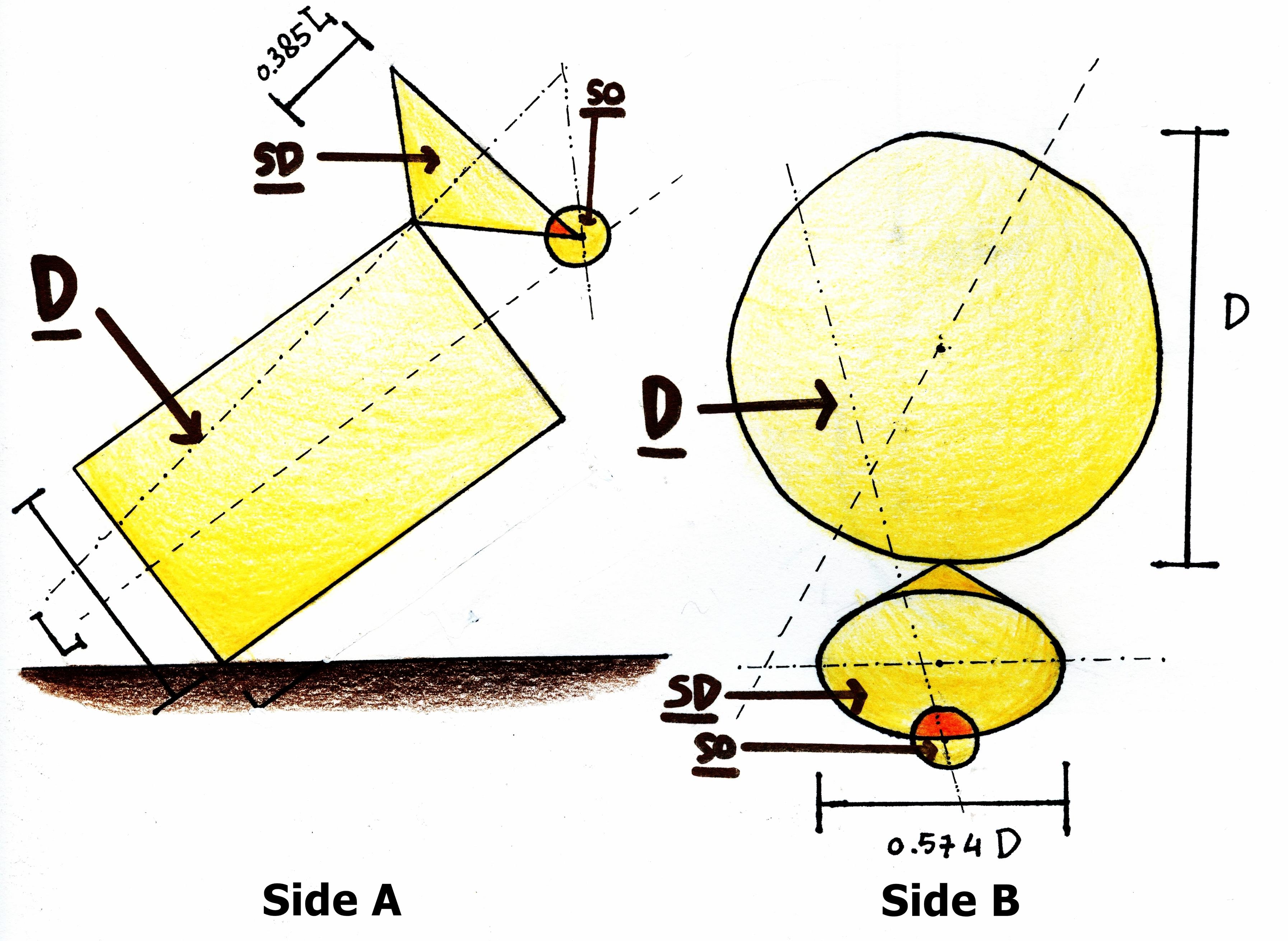
Comment and Improvement:
From side A, it is seen that the SO is hidden when seen from some angle, hence need to re-position the SO.
From side B, the SD looks a bit too big compared to the D, therefore need to make the diameter smaller to about two-third. This will reduce the portion of SD and enhance the dominance of D.
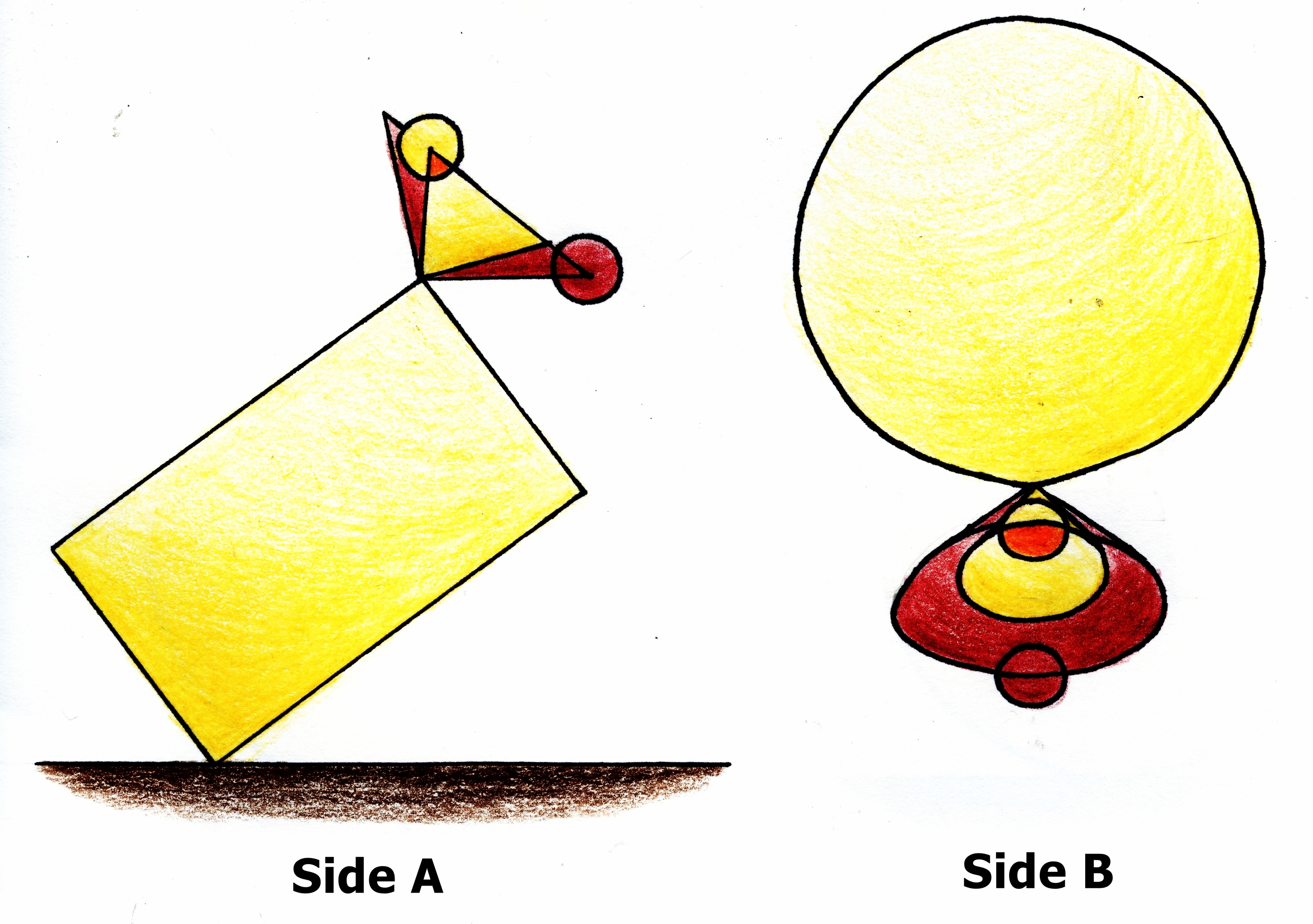
MODEL 3: When the Duck Goes to War
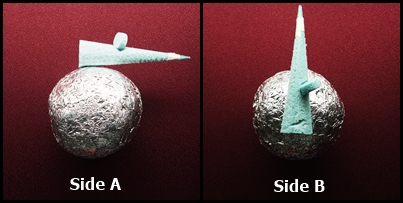
Relationship: Sphere is Dominant (D), cone is Sub-Dominant (SD), cylinder is Subordinate (SO)
Method: Wedging between SD and SO.
Proportion and Rhythm
Inherent: Cylinder has the smallest diameter, around half of cone diameter. While the cone has diameter about a quarter (~0.284) of sphere. In term of length, the cone is about one and one-eight (~1.125) of sphere. So, the sphere has the longest in both diameter and length.
Comparative: Sphere is obviously greatest in mass, followed by cone then cylinder.
Overall: Sphere is independent, cone is independent as well while cylinder is dependent on cone.
Comment: I found that Model 3 is ‘heavy’ and tense on the area between the meeting point of D-SD and the SO. However I feel that the model flow quite well, better than Model 2.
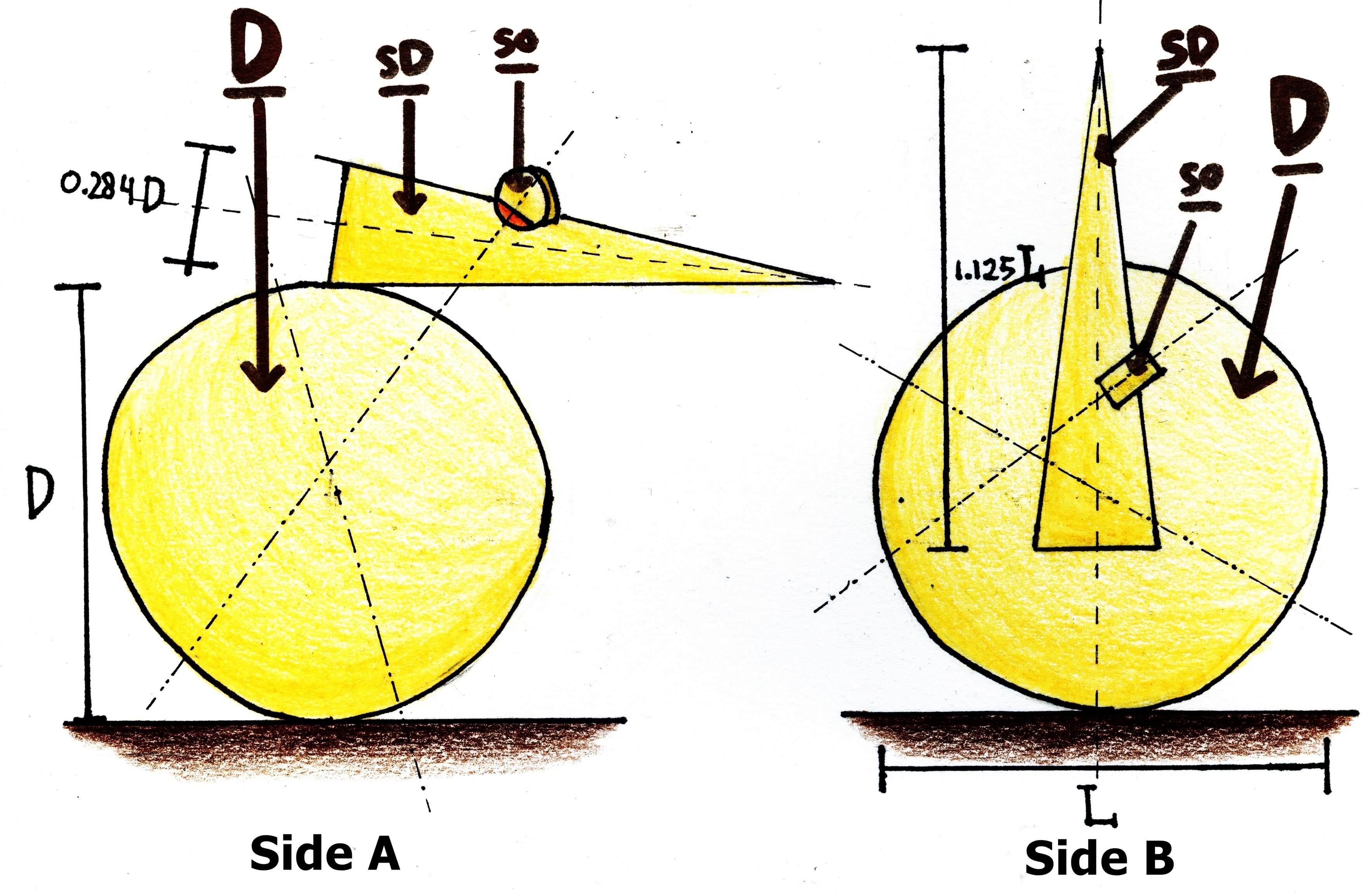
Comment and Improvement:
From both sides it is clear that the SD is rather long. For a very short moment, there can be confusion of which one is the Dominant from side B. Hence, need to make it shorter to around 0.6 of the current one. This will make the D to be more dominant and clear, especially when seen from side B.
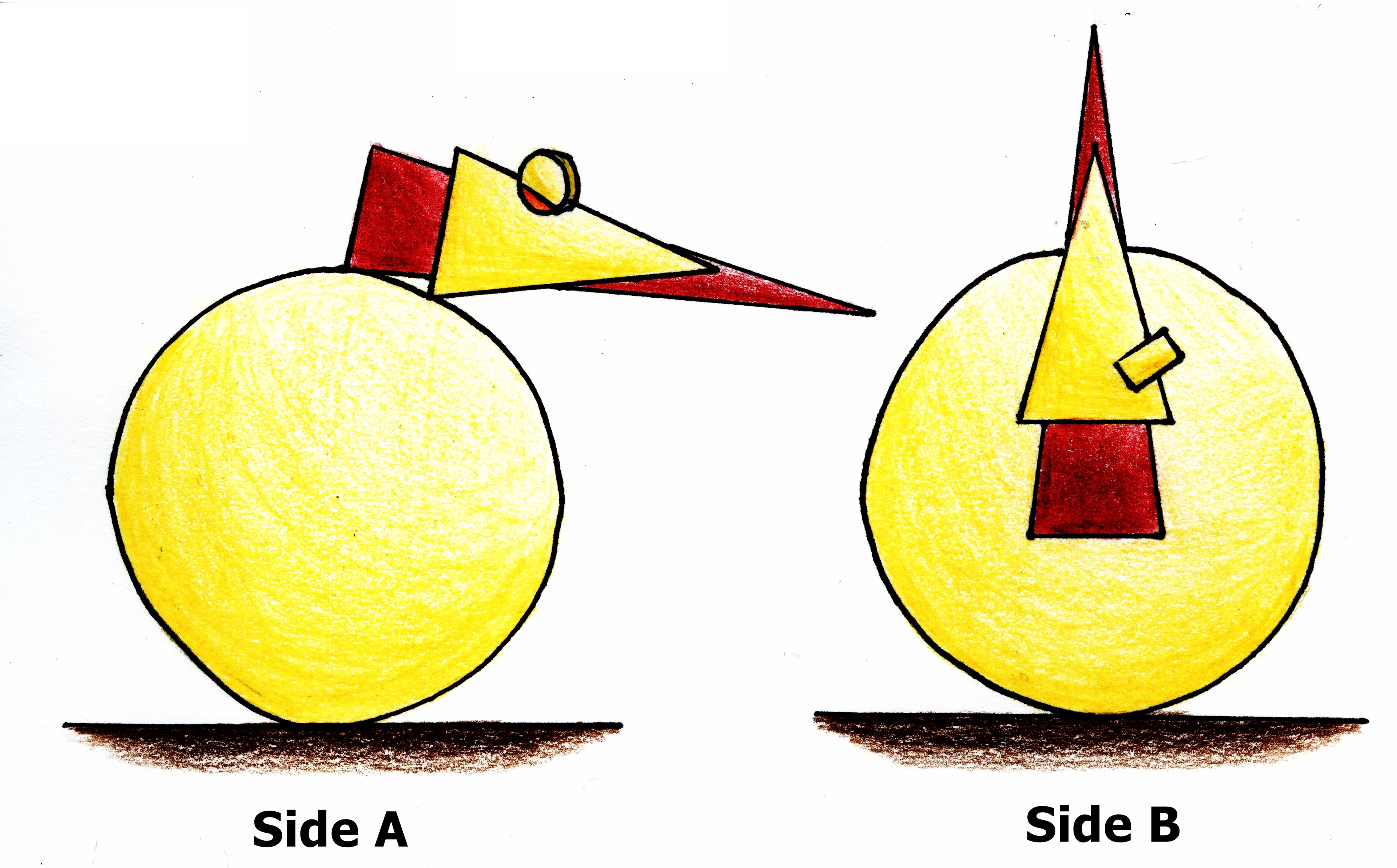
In conclusion, I decided to use Model 1: The Tilted Gramophone as my final model. I like it the most due to its interesting disc-like shape cylinder, also it has the best flow among my three models.
Hope you enjoy the post! What’s your view?
